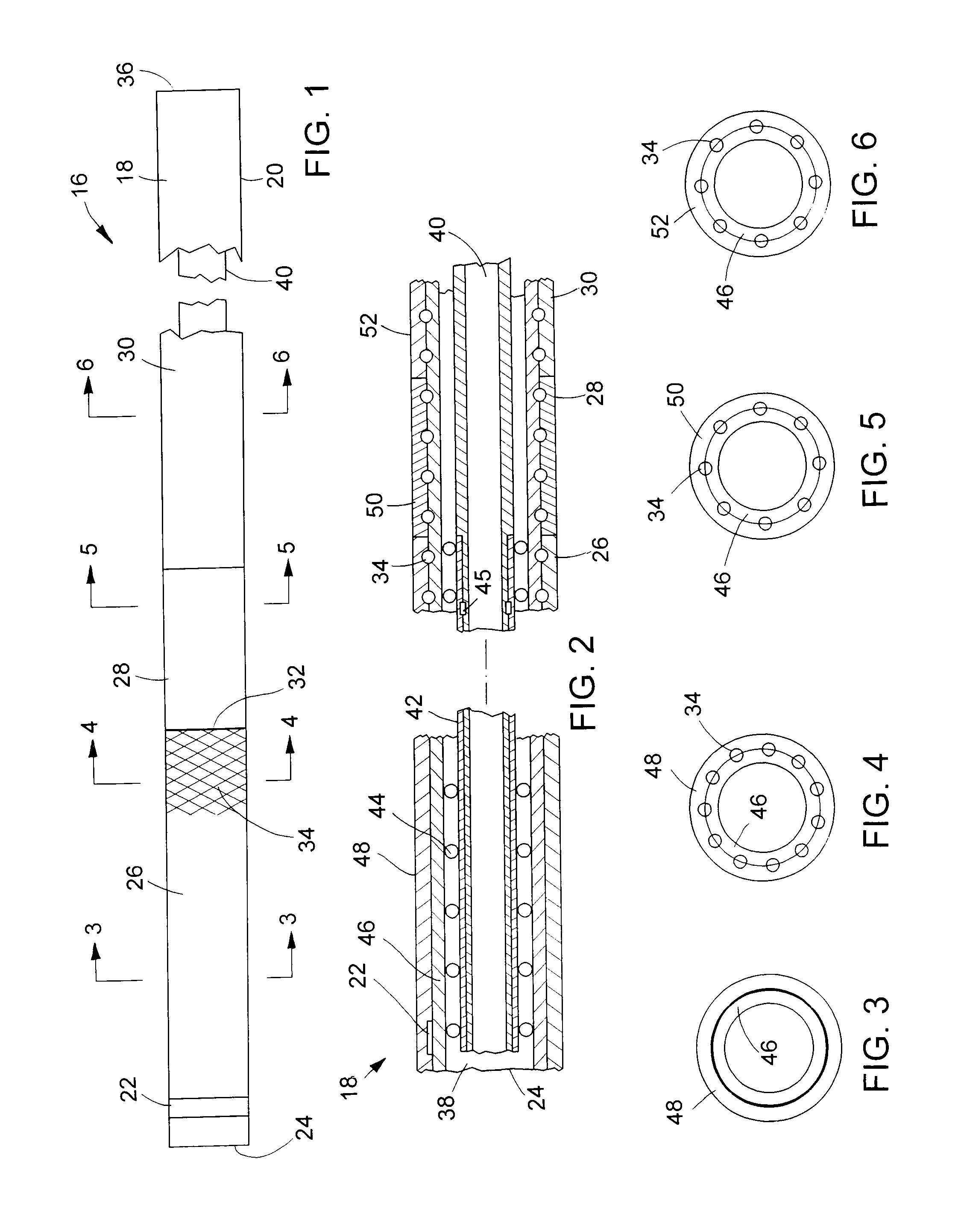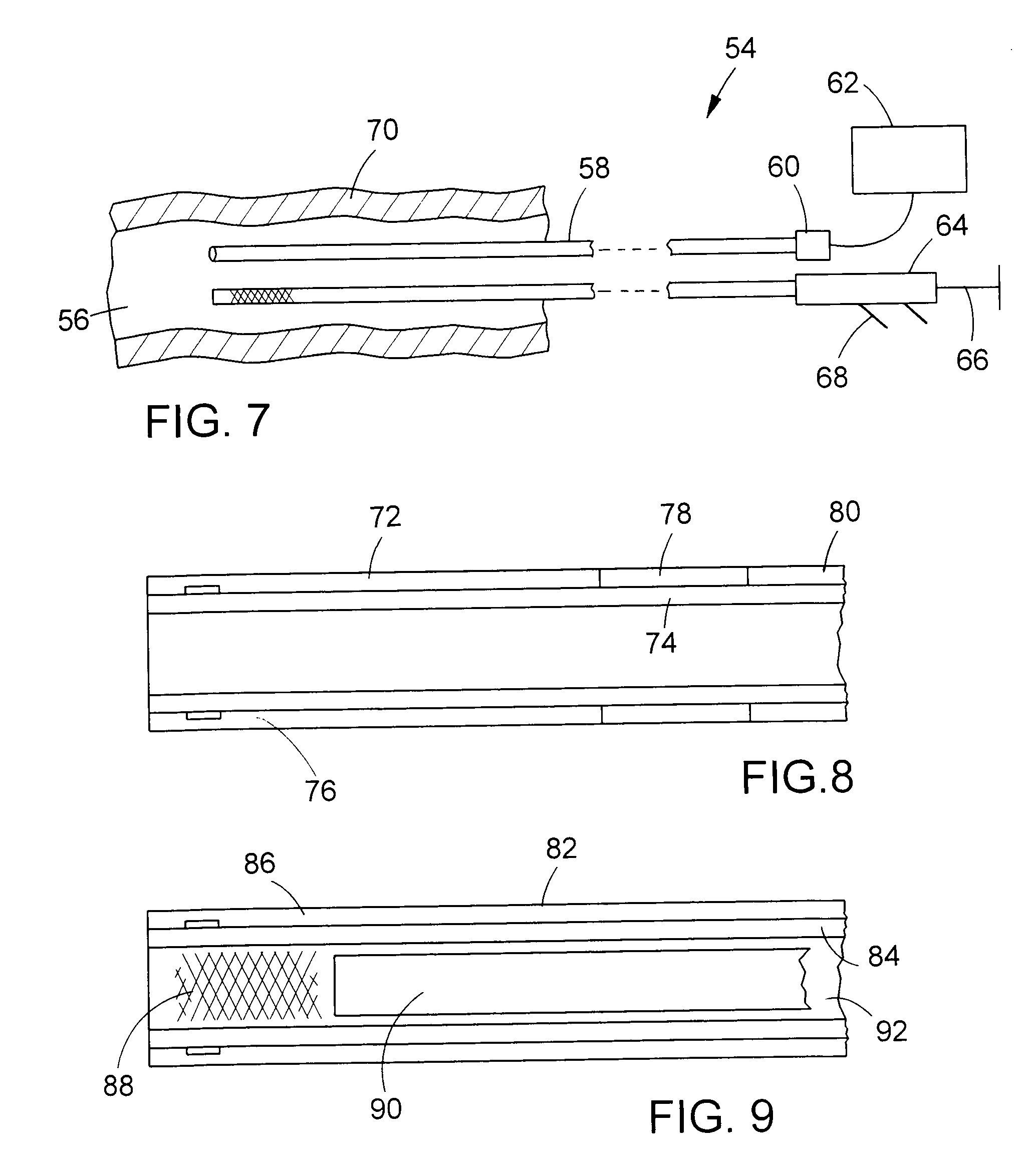Prosthesis deployment device with translucent distal end
- Summary
- Abstract
- Description
- Claims
- Application Information
AI Technical Summary
Benefits of technology
Problems solved by technology
Method used
Image
Examples
Embodiment Construction
[0031]Turning now to the drawings, there is shown a device 16 for delivering a radially self-expanding prosthesis to a selected treatment site within a body cavity or body lumen, and for deploying the prosthesis, once it is positioned at the treatment site. The device includes an elongate, flexible outer catheter 18 having a tubular catheter wall 20. A radiopaque marker 22 is mounted to the catheter near its distal end 24.
[0032]Along its axial length, catheter wall 20 is divided into three sections or regions: a distal region 26; a medial region or transition region 28; and a proximal region 30. As indicated by the break, the full length of proximal region 30 is not shown in FIG. 1. The proximal region is by far the longest of the three regions. The diameter and axial length of catheter 18 can vary according to the application and size of the body lumen involved. Some typical ranges for enteral applications include a total catheter length of 135-230 cm in conjunction with a distal s...
PUM
| Property | Measurement | Unit |
|---|---|---|
| Polymeric | aaaaa | aaaaa |
| Friction | aaaaa | aaaaa |
| Radiopacity | aaaaa | aaaaa |
Abstract
Description
Claims
Application Information
 Login to View More
Login to View More - R&D
- Intellectual Property
- Life Sciences
- Materials
- Tech Scout
- Unparalleled Data Quality
- Higher Quality Content
- 60% Fewer Hallucinations
Browse by: Latest US Patents, China's latest patents, Technical Efficacy Thesaurus, Application Domain, Technology Topic, Popular Technical Reports.
© 2025 PatSnap. All rights reserved.Legal|Privacy policy|Modern Slavery Act Transparency Statement|Sitemap|About US| Contact US: help@patsnap.com



